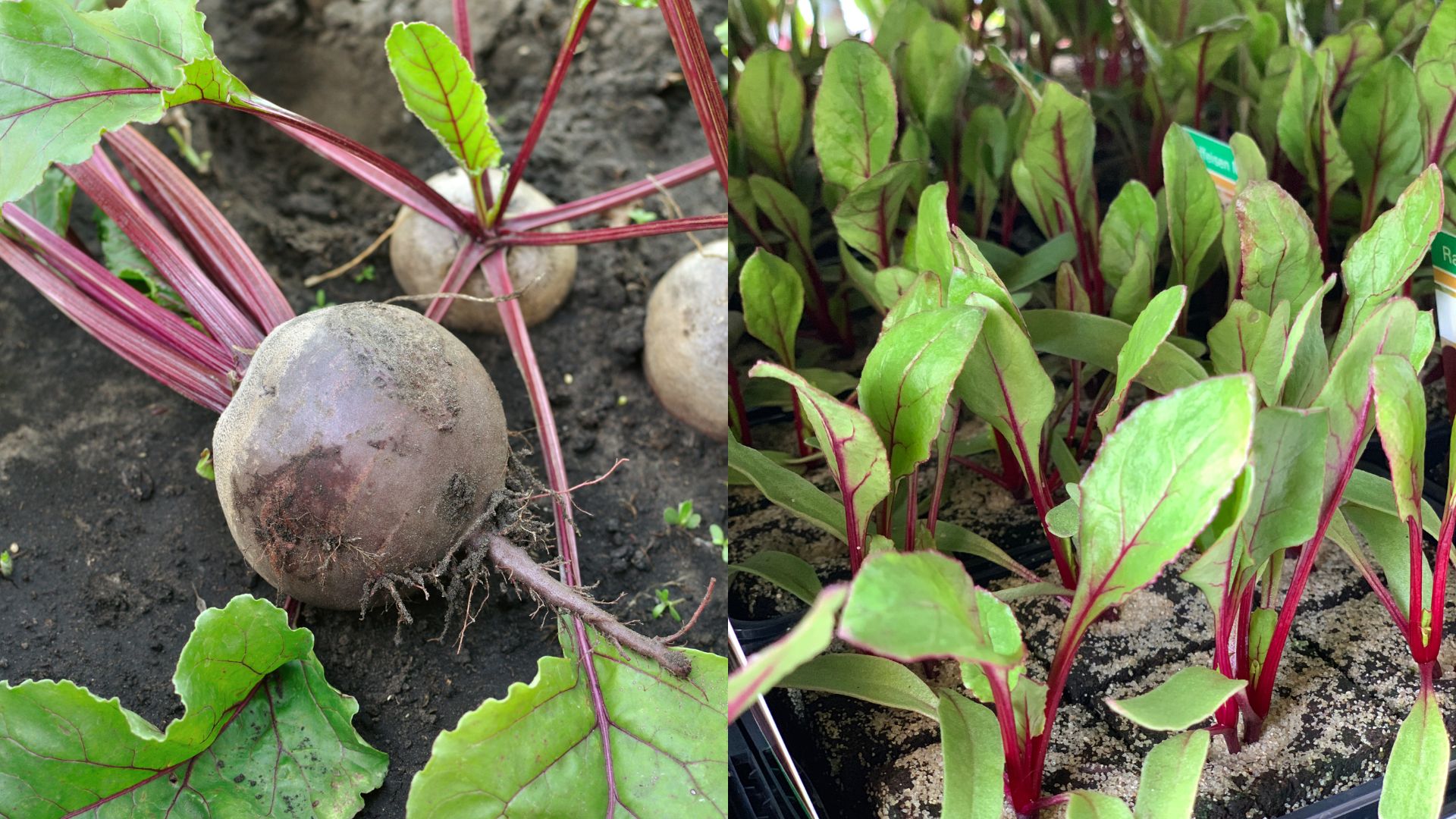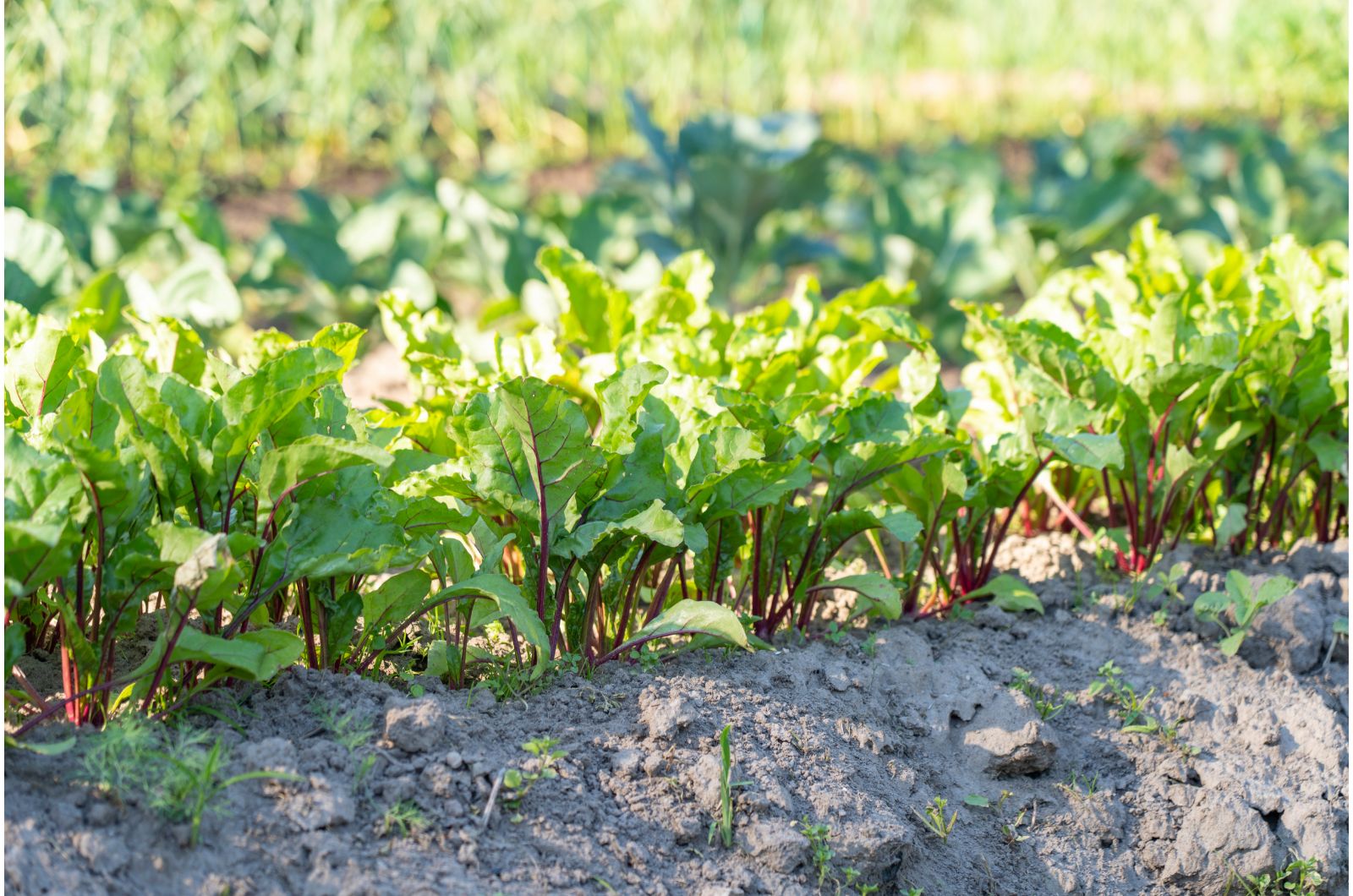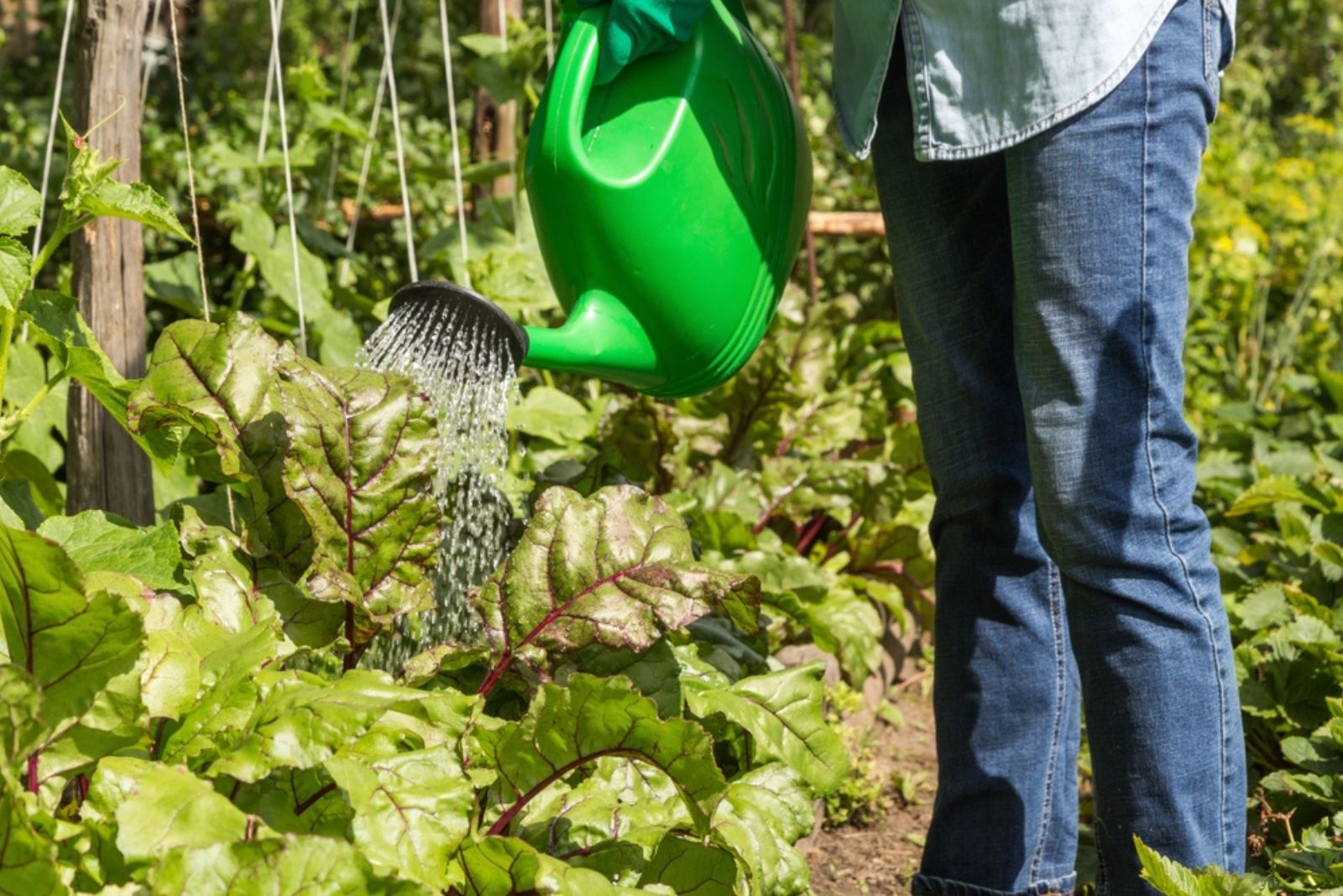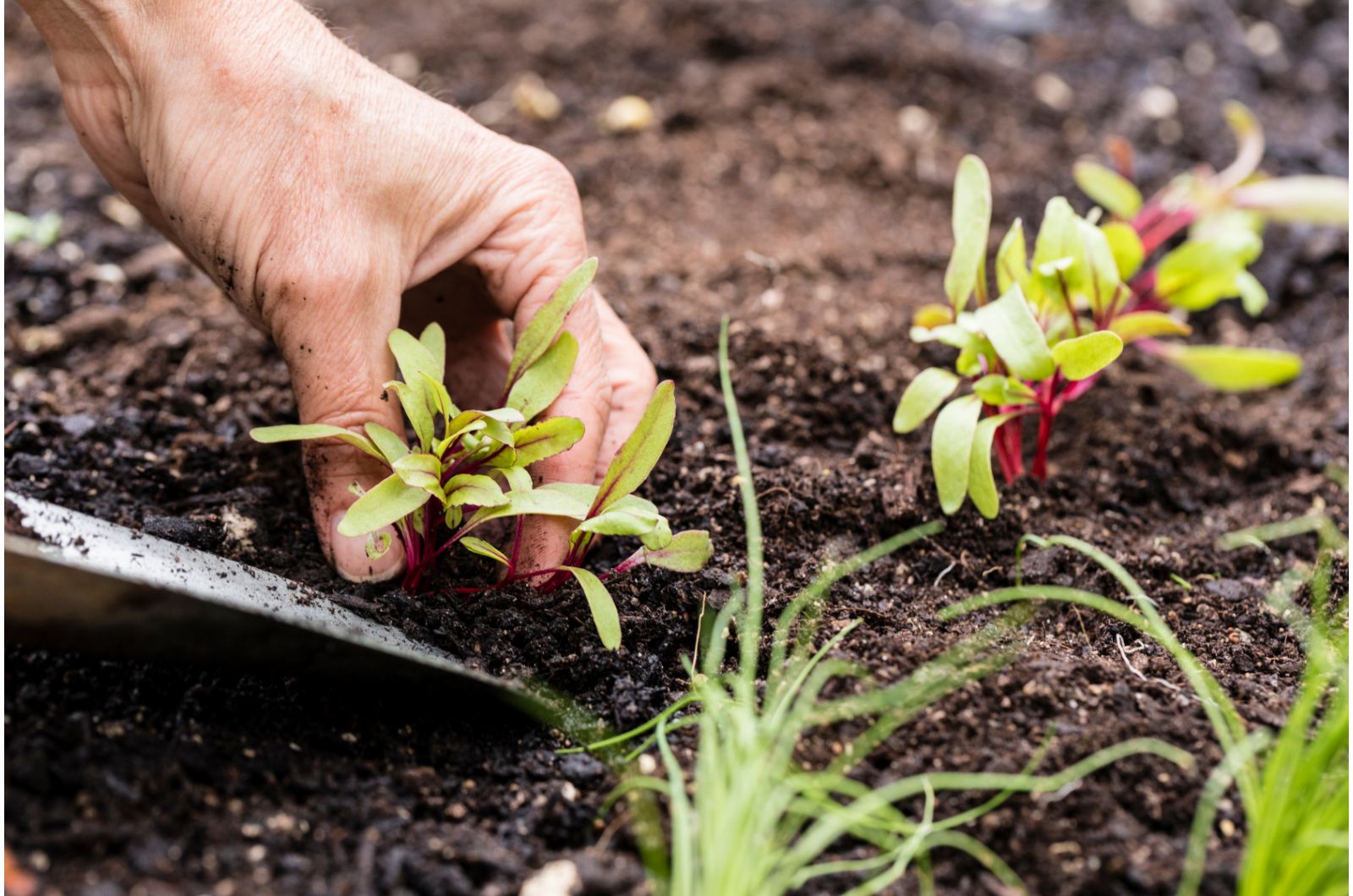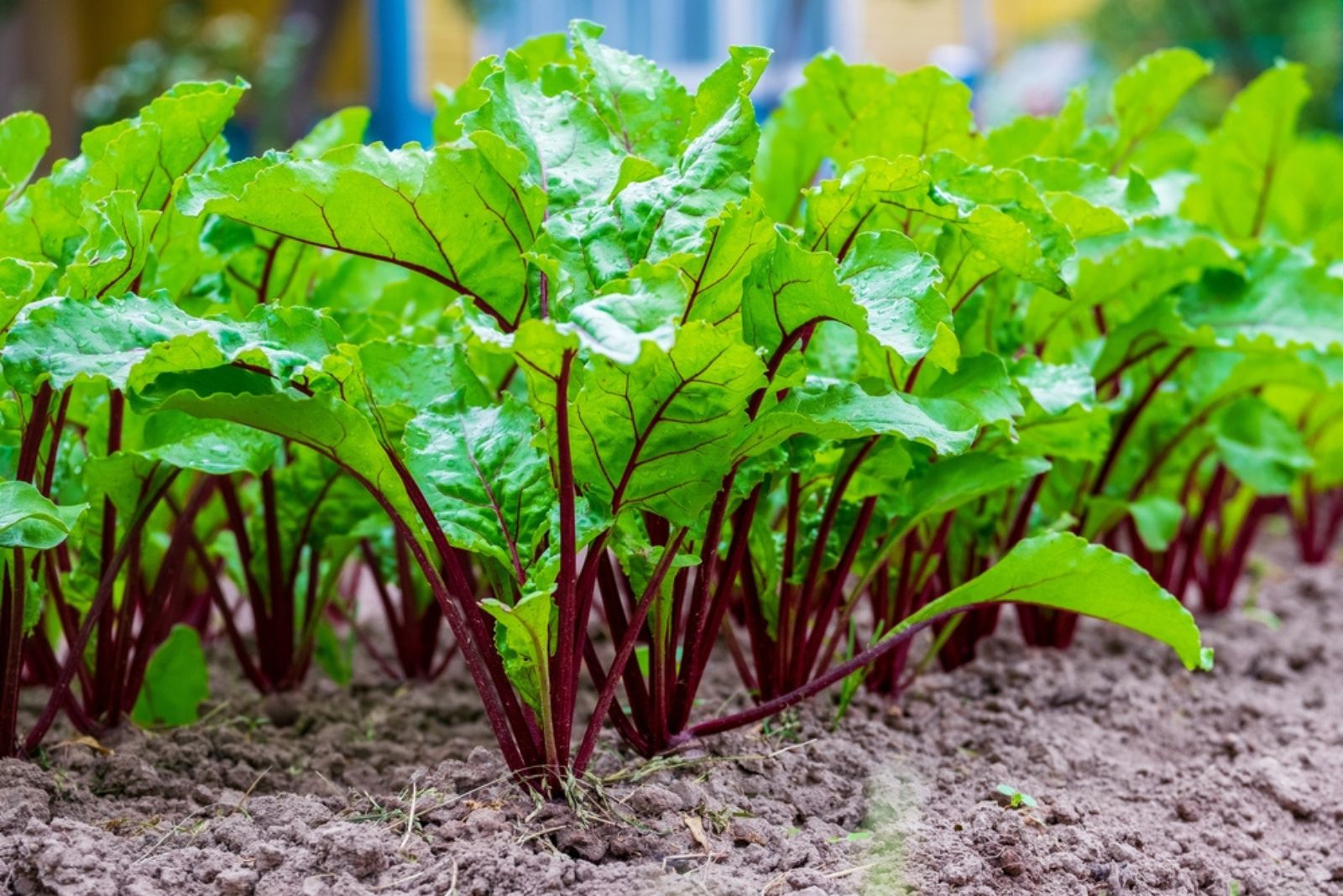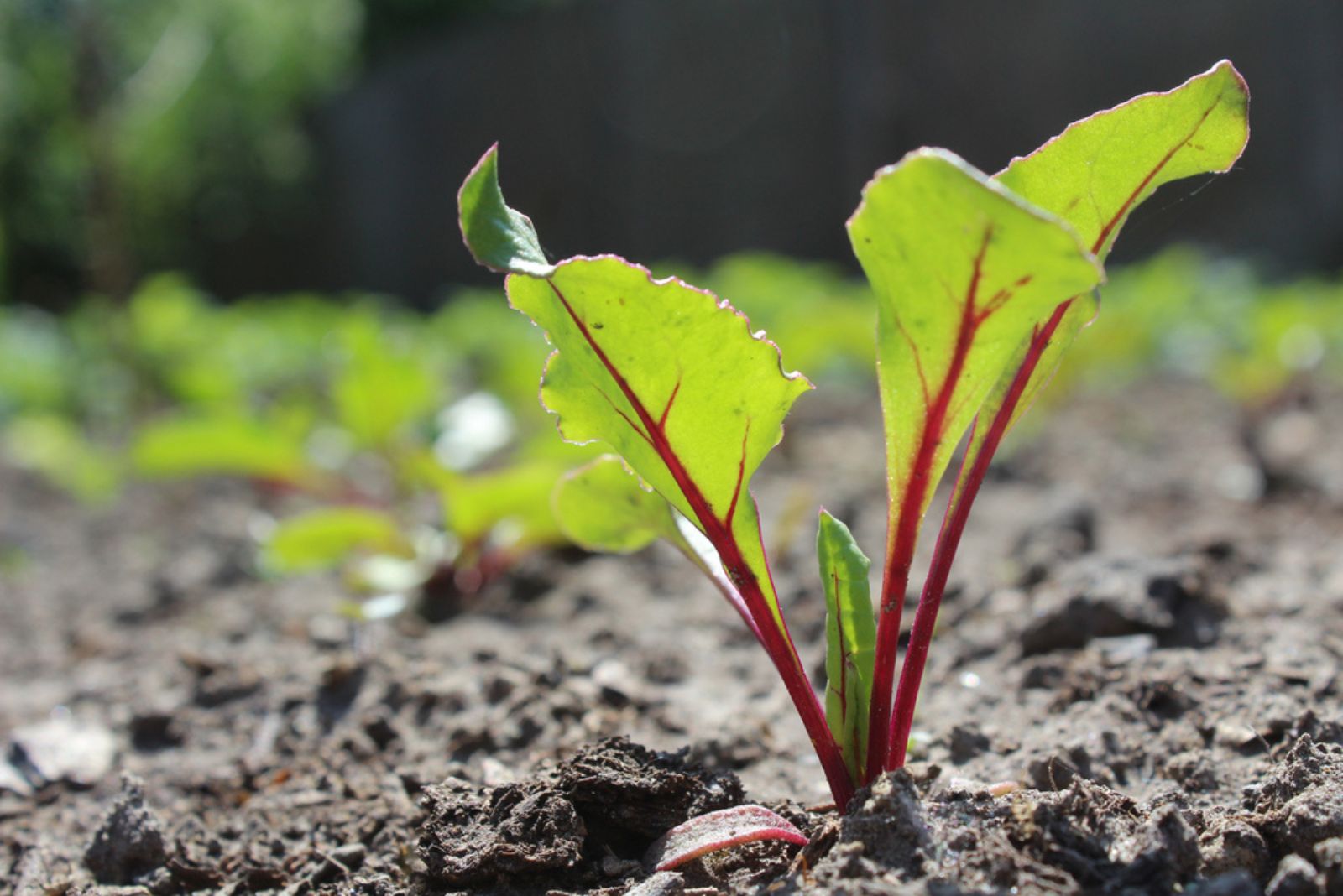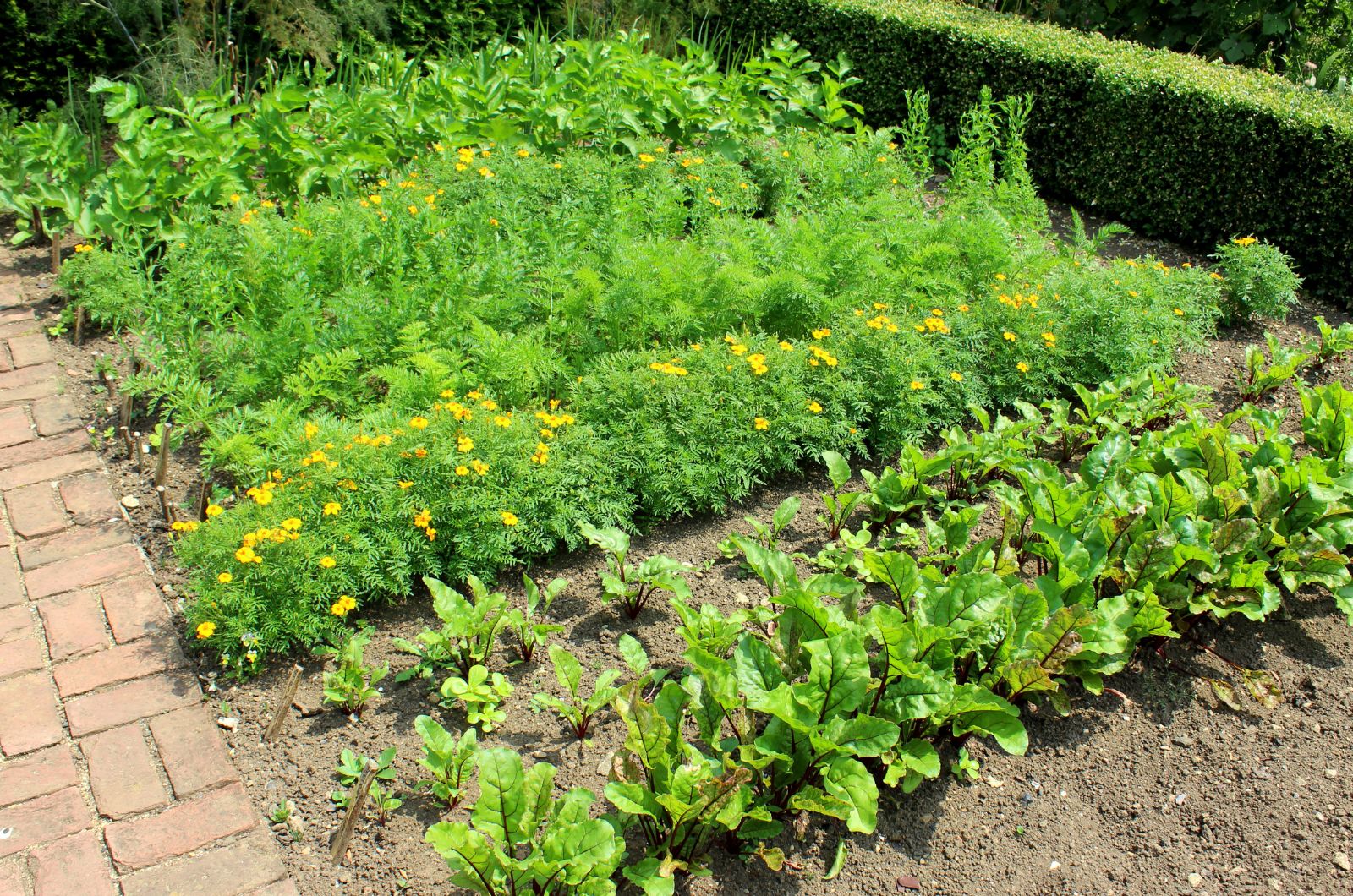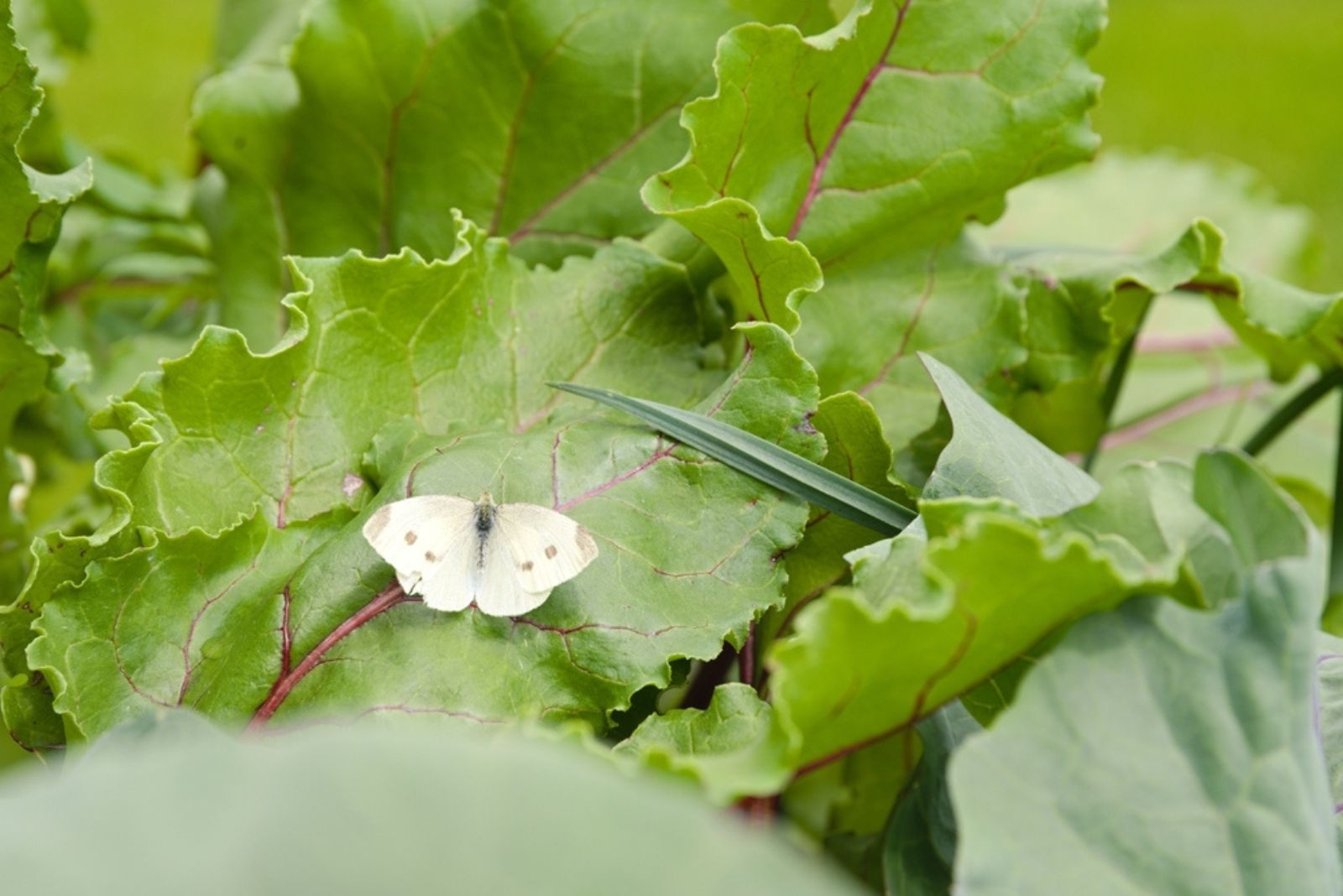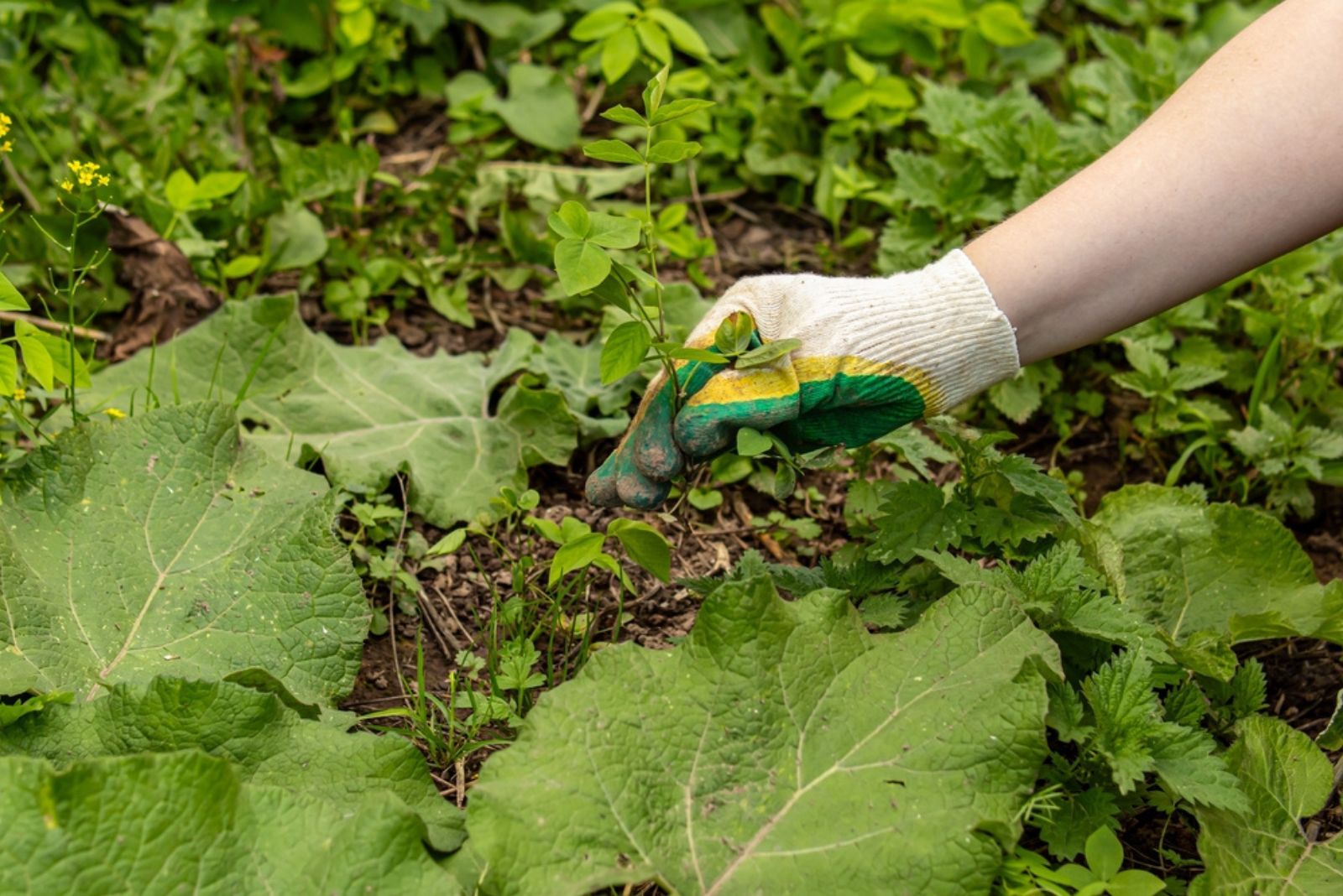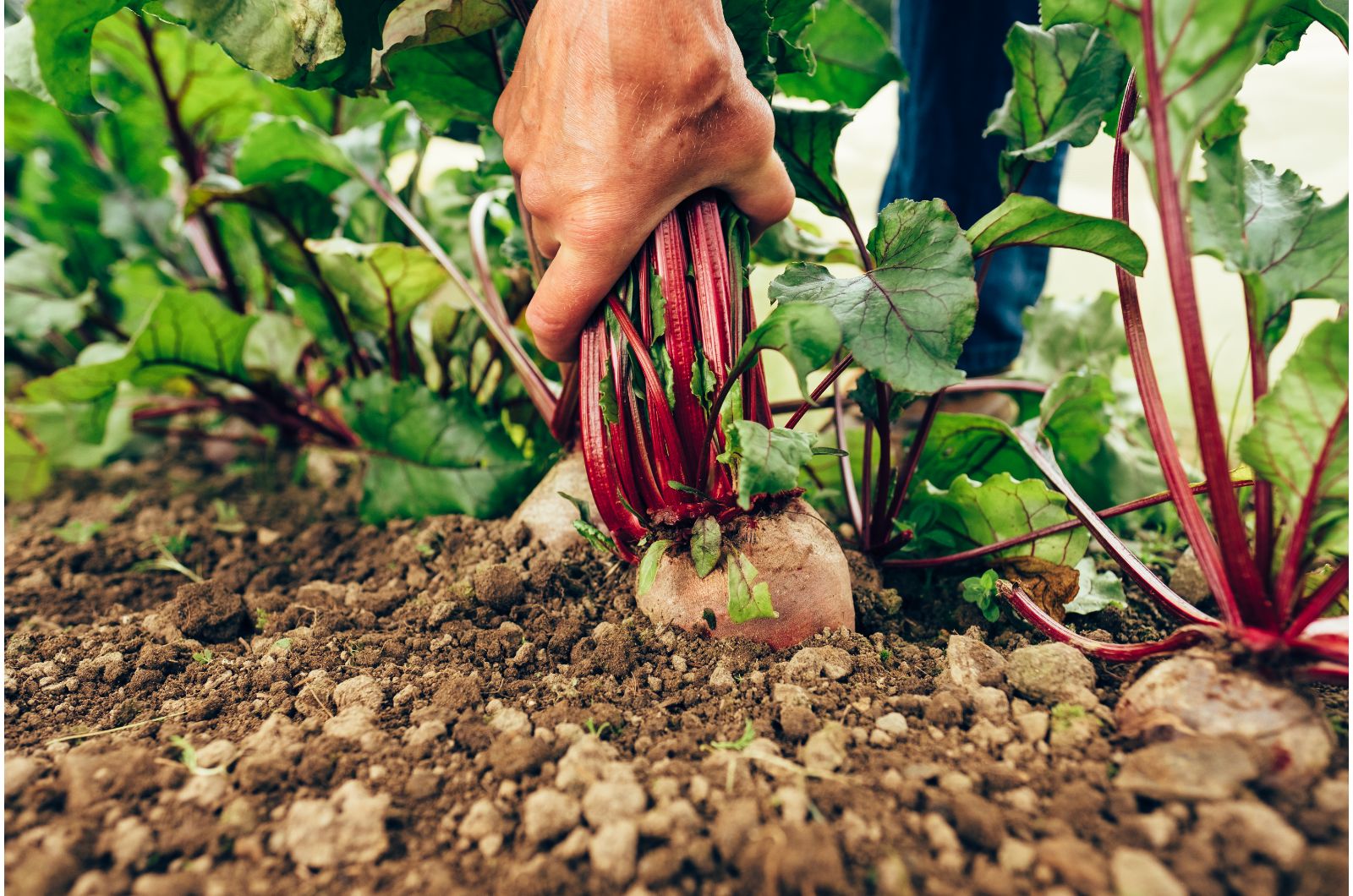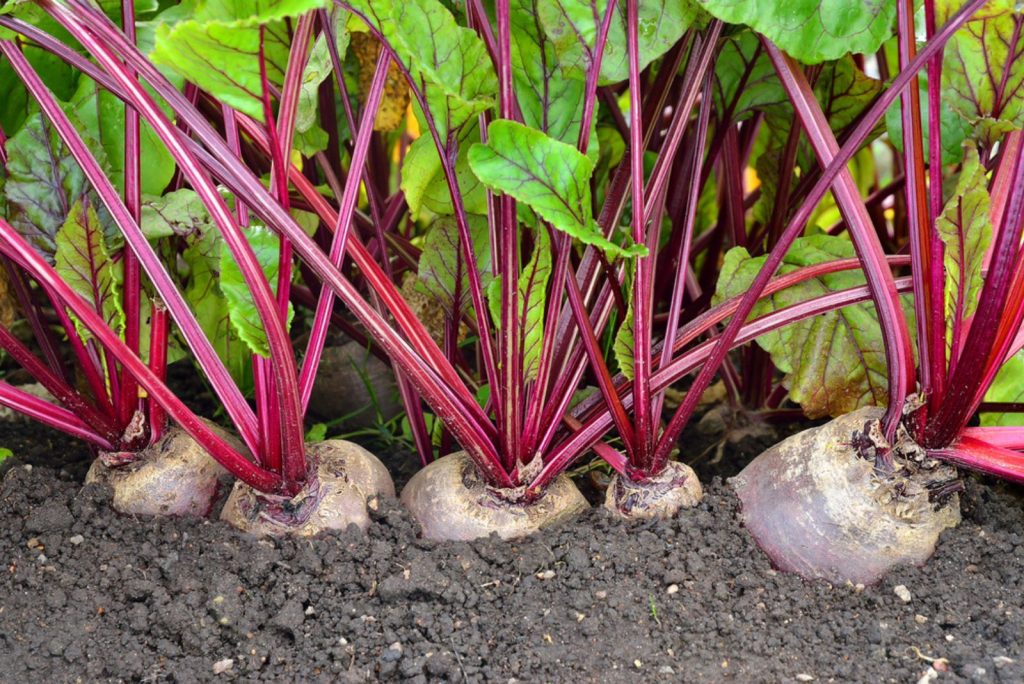Beetroots are root vegetables that seem indestructible. Unfortunately, that’s not the case. There are a lot of different things that bug these hardy veggies, which can affect their growth and development.
For instance, if you plant them in the wrong location or you mess up the plant care, you might end up with a few undeveloped beetroots. Understanding how to properly plant and grow beetroots will help you avoid these mistakes and enjoy a bountiful harvest at the end of the season.
In this article, we are going to cover common beetroot growing mistakes and how to avoid them.
Let’s dive in!
1. Choosing The Wrong Location
The most important thing is to find the perfect location for your beets. This includes considering the soil quality plus the light conditions. Even though these veggies can withstand different soil types, they won’t thrive in clay soils that are too compact.
Opt for a loose soil instead – sandy and loamy soil are the perfect options. The soil pH should be neutral or slightly acidic (6-7.5).
Fertility of the soil is also important. Before planting, add some aged organic matter or well-rotted garden compost. Fertilize with proper fertilizers (low-nitrogen fertilizers recommended) or multi-purpose compost.
Make sure to rake the soil a few weeks before planting and remove any stones from the soil. If you don’t do this, you’ll probably end up with misshapen beetroots.
When it comes to the light requirements, beetroots enjoy a lot of sunshine. They need at least six hours of sunlight to grow and thrive. So, make sure to plant them somewhere sunny!
2. Inadequate Watering
Since beets consist of 87% water, it is crucial for them to receive enough water to properly develop [1]. Since they are fast-growing veggies, irregular watering for even just a few days can result in uneven growth and lead to the development of woody or fibrous roots.
The best way to water beets is to keep the soil consistently moist (not dry and not too soggy). This is achieved by simply touching the soil to feel if it is moist or not before watering.
Usually, an inch of watering per week works perfectly fine, but you should adjust this during dry periods. It’s better to water thoroughly every few days than to water lightly every day.
Even though they like consistent moisture, too much watering can also cause some issues. Overwatering usually results in fungal diseases that can completely ruin your beets.
Drip irrigation systems or using a soaker hose is a good way to target the roots. You can also try to make a DIY drip irrigation system for your root vegetables.
3. Planting Them Too Early
Beets are one of the easiest veggies to grow from seeds. However, it is important to sow the seed at the right time otherwise they won’t germinate and develop properly.
Seeds need warmth and enough light for germination – the soil temperature should reach about 50 degrees Fahrenheit for germination to occur.
The best time to plant beet seeds is from April to July. The soil will be warm enough and there will be plenty of sunshine!
You can sow them a bit earlier if you plant them in a greenhouse. In this case, opt for bolt-resistant varieties like Action or Boltardy.
4. You Didn’t Thin Them
Thinning is another crucial step that is often overlooked. Beetroots need adequate space to develop and grow into healthy roots.
Overcrowding leads to a high number of smaller-sized beetroots, while low density planting leads to fewer larger beetroots.
Most beet varieties produce their best roots when spaced two to three inches apart. There is a difference between ‘multigerm’ and ‘monogerm’ seeds – multigerms actually consist of five to six seeds in a cluster.
This will dictate how you should thin them so make sure to check the packaging before planting.
It’s best to thin them at an inch high like carrots or radishes. To prevent upsetting the root systems of stronger beets, prune the weaker seedlings at the base of the stem.
For more information, please check out this video:
5. Planting Beets When It’s Too Hot
Just like beets can’t stand the cold soil, they also don’t enjoy temperatures that are too hot either. They can struggle in high heat and prefer cooler temperatures during the growing season.
Extreme heat can cause the plants to bolt or develop bitter-tasting roots. It’s best to time your beetroot planting for cooler seasons or provide shade and regular watering during hot summer days.
Beets generally thrive in a temperature range from 50 to 65 degrees Fahrenheit. Temperatures around 80 degrees Fahrenheit would simply be too much to handle.
6. Wrong Companion Plants
Companion planting is an old gardening hack that is still being practiced. This simply means that some plants grow better together!
When it comes to our lovely beets, they should not be planted next to chard or mustard as they would only end up competing for nutrients.
Pole beans are also a big no-no because they are nitrogen-fixating plants. They would provide too much nitrogen in the soil, and nitrogen promotes leaf growth instead of root growth – and we don’t want our root veggies to have lush leaves instead of firm roots!
Some of the best beet companion plants include onions, leeks, garlic, and chives. Their pungent smell keeps pests away. Kale is also a good companion to beets.
If you are growing carrots, then check out: Carrot Companion Plants: To Grow Or Not To Grow?
7. Get Rid Of Pests
Don’t think that since roots are growing underground that they are not a target to birds and other flying pests that simply love to munch on their small leaves.
Protect your beet seedlings from early attacks by birds by using polytunnels, cloches, or homemade bird deterrents like dangling CDs or chicken netting. Consider growing plants to satisfy birds’ needs specifically.
Flea beetles, cutworms, and aphids are other common pests that attack your beets. Try organic controls like diluted neem oil or soap solution to fight aphids, and encourage beneficial predators like lacewings and ladybugs.
Diseases like Mosaic virus, Cercospera leaf spot, and Downy mildew also affect the beets. Properly remove infected plants to prevent the spread of the disease.
Adequate spacing and airflow minimize the risk of these diseases. You can also consider growing disease-resistant beetroot varieties such as ‘Boro,’ ‘Avalanche,’ and ‘Merlin’.
8. Weeds Have Stolen The Nutrients
Annoying weeds can easily suffocate beets, steal their nutrients, and affect root development. To prevent weeds from impeding beetroot development, it is crucial to implement effective weed control measures.
Regularly inspect and remove weeds by hand – make sure that you get rid of the entire weed, including its roots. Mulching around the beetroot plants can help suppress weed growth by blocking sunlight and preventing weed seeds from germinating.
9. Harvesting Incorrectly
You don’t want to mess up at the last hurdle when you have taken such good care of your beets!
Harvesting beets at the right time is crucial for optimal taste and texture. They generally take about 60-80 days after germination to reach full maturity.
To determine if beets are ready for harvest, consider their size and foliage. Harvesting every other beet when it reaches the size of a golf ball allows the remaining beets to continue growing. Avoid letting them grow too large, as this can result in tough and bitter-tasting roots.
Healthy, wide, and bright green leaves are a good indication that beets are ready for harvesting, while brittle yellow leaves indicate potentially bitter and woody roots.
To harvest beets, gently pull or twist the base of the stems, or use a garden fork to loosen the soil around the plant and lift it carefully. Optimal root size for lifting is around 1.5-3 inches in diameter.
Additionally, the beet greens can be harvested like other leafy salad crops by picking the larger outer leaves while allowing the smaller center growth to continue thriving.
Remember, proper harvesting techniques ensure a continuous harvest throughout the season, allowing you to enjoy fresh beets at their best!
10. Ignoring Soil Drainage
Good soil drainage is essential for healthy beetroot development. If your soil retains too much water, the roots can become waterlogged and start rotting. Compacted or heavy clay soils, in particular, pose a risk because they prevent excess water from draining properly.
To improve drainage, amend the soil with organic matter such as compost or well-rotted manure before planting. Raised beds are another great option for areas with poor drainage, as they allow excess water to flow away more easily.
If you notice standing water after rainfall, consider adjusting your planting area or incorporating sand into the soil mix to promote better aeration.
On the other hand, excessively dry soil can also cause issues, leading to tough, underdeveloped roots. Striking the right balance in soil moisture is key for growing juicy, flavorful beets.
11. Forgetting To Rotate Crops
Crop rotation is an important practice in any vegetable garden, and beets are no exception. If you plant beets in the same spot year after year, the soil can become depleted of essential nutrients, leading to weaker plants and lower yields.
Additionally, pests and diseases that target beets, such as root maggots and fungal infections, can build up in the soil over time.
To avoid these issues, practice a three-year crop rotation plan. This means not planting beets (or other root vegetables like carrots and radishes) in the same area for at least three years.
Instead, rotate them with leafy greens or legumes, which help replenish nutrients in the soil.
By rotating your crops, you not only maintain soil fertility but also minimize the risk of pests and diseases, leading to healthier, more productive beet plants!
References
1. Bjarnadottir A. (2023). Beetroot 101: Nutrition Facts and Health Benefits. Healthline

